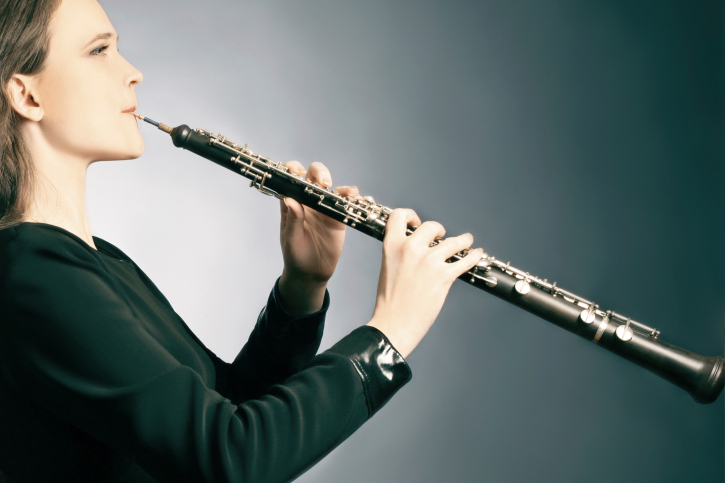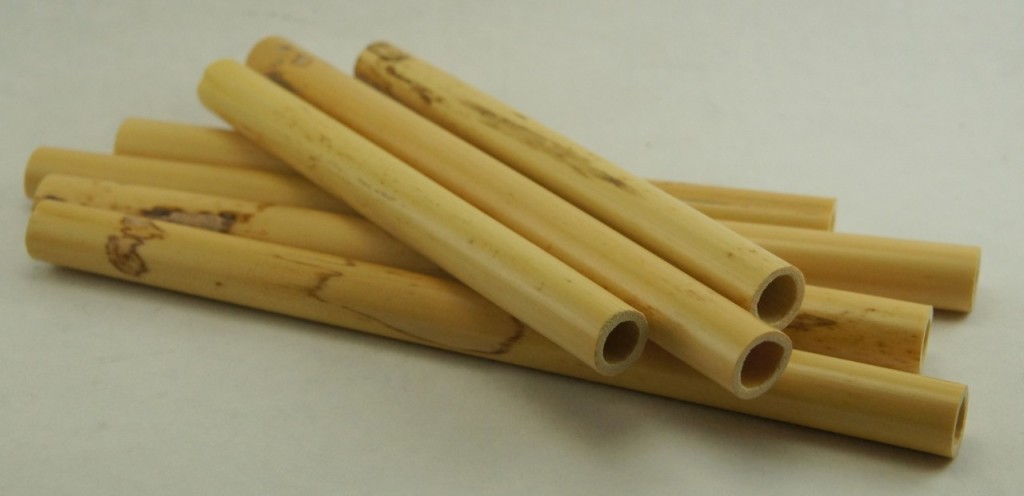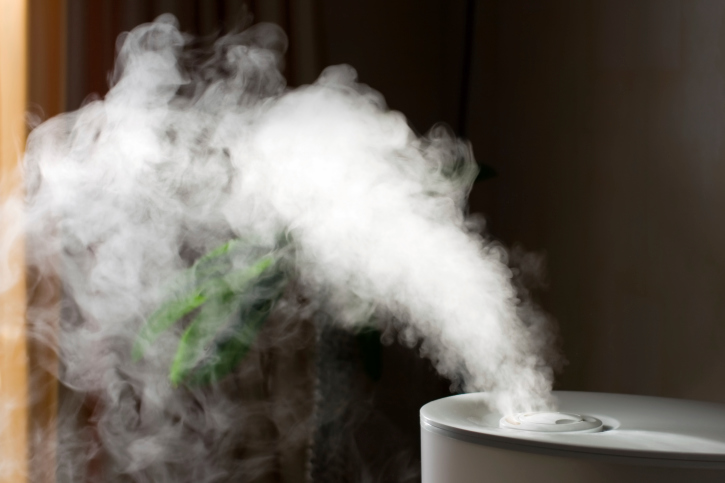The staff at Midwest Musical Imports has extensive experience performing and teaching on our respective instruments, in addition to the sales we do every day. We want you to make an informed decision and purchase an instrument that will serve you well for years We hope that these guide will give you a more clear picture of what we have to offer as you seek the right instrument for you. We are always happy to speak with you over the phone, so please don’t hesitate to call us at 1-800-926-5587. Click the appropriate link below for your instrument buyer’s guide so you can get started on your research.
Category: Oboe
Introducing the Lorée-Cabart Oboe & English Horn
We're pleased to offer the Lorée-Cabart instruments here at Midwest Musical Imports - Including both the Cabart Oboe and the new English horn! Looking for your first English horn on a budget then we highly recommend the Lorée-Cabart. A mostly full conservatory instrument, it is all grenadilla and includes a Lorée 2H bocal, case and case cover. These are beautiful instruments and certainly worth trying! The oboes have long been an affordable option for students and amateurs alike! Call for current price and availability.
About the Cabart Firm -
Founded in 1893, Cabart became part of the de Gourdon company in 1974. Cabart is the stamp of well-made student oboes and English horns with close tolerances, key-fitting, and cork pads throughout the instruments. Because of their high standard of manufacture combined with precise and stable tuning, Cabart is, very often, the most promising student choice.
Oboe Summer Goals

Not going to a festival or studying privately, but want to up your musical game between the summer months? What can you do on your own to improve your playing? Grab a tuner, metronome, and one of these methods! Challenge yourself with my picks for the top oboe method books for practice and self-teaching:
Barret Oboe Method- These progressive etudes have an opera aria influence, and chiefly are used for studying musicality. Valuable technique studies are also included in this method. There is a version edited by Martin Schuring, which is much easier to read; it is missing some prose discussing oboe basics, including breathing and articulation.
How to Buy a Used Oboe
When it comes time to purchase an oboe, upgrade from your student model, or just find a back-up for your main instrument, buying a brand new oboe may not be financially feasible. We certainly understand the constraints attached to purchasing an instrument and we are proud to offer a wide selection of used oboes in all levels and price ranges to fit your needs. While similar to trying brand new instruments, the process of trying used oboes is going to be different and there are a few things to consider a long the way. Hopefully these pointers will help you as you start the venture of finding a used oboe!
Read More...
Back-to-School Audition Prep
For many of our customers the beginning of the school year means audition season, for high school band chair placement, or screened auditions for the college orchestra. Besides making sure you get your instrument out to practice the audition material, here are some things you can do to make sure you perform your best at an audition.
Used Instrument Warranty
When it's time to replace a musical instrument, sometimes purchasing a brand new instrument may not be an option. Midwest Musical Imports is pleased to offer a wide selection of high quality used instruments that will fit your needs. We also offer a 1-year maintenance and crack warranty included with the purchase of select used oboes, bassoons, clarinets, and saxophones!
Call our instrument specialists at 612-331-4717 for further information and trial availability!
Diagnosing Common Oboe Reed Problems
An oboe reed can make or break an oboe's usability and sound. A good reed is responsive, balanced, and stable. But too often, reeds are too thick, too long, too open, too closed, too sharp -- you name a problem, and it's a possibility for an oboe reed. So how do you determine the right adjustments for your reed? First, you need to diagnose common oboe reed problems. Start with this guide, then check out our guide to oboe reed adjustments.
Common Flat Reed Issues:
Gouge - using cane that is gouged too thin can result in reeds being flat in pitch. If you're gouging your own cane, always keeping an eye on the measurements of your cane is crucial. If you tend to favor cane that is gouged on the thinner side then adjusting your scrape will be necessary as to not take too much cane out at the beginning stages of reed making.
Tip opening - often times, no matter how well the reed is scraped, a tip opening that is too large can result in flat reeds. Something to keep in mind, scraping on a reed that is too open to adjust pitch will likely not solve the problem. If the pitch is already flat to begin with, then removing cane will only lower the pitch further. In the early stages of the reed's life you can always attempt to squeeze the tip closed with your thumb and forefinger or you can also squeeze at the bottom of the reed just above the string. In both these cases you can risk cracking the reed. Never use anything other than your fingers - avoid pliers or any thing else as you risk damaging the shape of the top of the staple effectively making it unusable again. After a few days the piece of cane may settle down but if the opening is consistency too large you may need to start a new reed.
Oboe Reed Adjustment Basics
As oboists, reeds are either our best friends or our mortal (or not so mortal) enemies. They can make or break our practice sessions, performances, and auditions. They can be as fickle as the wind or the weather and can quickly become the bane of our existence. All this being said, reeds are the equivalent to any good puzzle - it just takes time, understanding, and patience to find the solution. Wherever you fall on the 'reed-making spectrum' (a beginner just learning the ropes or an advanced, self-sufficient reed-maker), our expert oboists, Steven and Jeff, would like to offer some basic adjustment ideas to help you along your way. Remember - these are just suggestions and may or may not apply to your reed-making. Consider this food for thought!
Before adjusting an oboe reed, determine what the reed needs. Check out our guidelines for diagnosing common oboe reed issues. Once you've got an idea of what you'd like to accomplish, you're ready to get started.
English Horn Bocals - A Basic Guide
An important part of any successful English horn performance is not just having a great reed, but also the right bocal. Just like with bassoons, finding a good match for your English horn or oboe d'Amore is a process that takes some time and effort, and there are a lot of questions that come up along the way. The most common question we receive is what are the differences between the makers and the different styles? We're proud to stock a wide selection of new and used bocals by Hiniker, Ross, Laubin, Dallas, and Loree, and we're hoping this guide can answer a few of these questions for you if it's time to consider a new English horn bocal! Read More...
Update to Stevens Oboe Staples
Effective immediately in 2013 - Stevens Double Reeds will be discontinuing the thickwalled version of the oboe staples. We have a decent stock in both the #2 and #3 in silver and brass but this will be the last that we will have. The next stock of both the Student and Pro staples will be thinwall only.
Get your thickwalls while you can!
Tube Cane Guide
The foundation of any great reed is the quality of its parts, most importantly the cane used. One of the most frequently asked questions the oboe staff gets at MMI is ‘What kind of tube cane is really good right now?’ While every oboist looks for different characteristics in their cane, this guide will serve as a breakdown for the general qualities our cane displays. Keep in mind that different batches of cane will behave differently though there are some consistencies in brands that we see from batch to batch as we sort the cane. As always, we do not recommend buying large quantities of cane you’ve never worked with before as tube cane is non-returnable. Start with a quarter pound to determine if the cane will suit your needs. If you like what you get you can always order more! If you have any further questions regarding tube cane batches, you can always contact Jeff or Steven at 800.926.5587 for further information and insights! Read More...
Humidification of Woodwinds In Dry Weather
With winter months upon us, a concern with many woodwind players is keeping their instrument properly maintained in dry weather. This is especially important for wood oboes, the instrument most prone to cracking in extreme conditions. Clarinets are less prone to cracking, and bassoons almost never do, and plastic instrument will never crack due to humidity, but they can still be negatively affected by extra dry weather. Potential symptoms of a dry instrument include binding or loose keys, dry pads that don't seal well, loose fitting joints and bell rings or body bands, and a general feeling that the instrument just isn't as resonant as it usually is. We suggest proper humidification of even plastic instruments in dry months.



